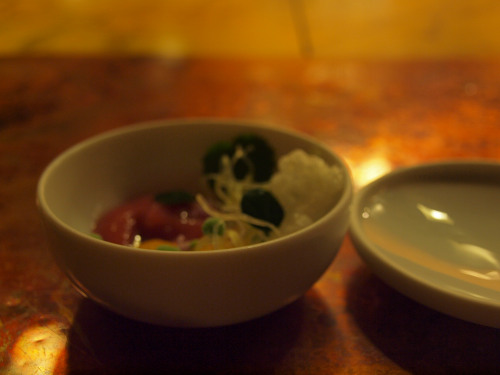Zach Bell, Yale University
Watermelon speaks of summer barbecues and the Fourth of July, the
Stars and Stripes and the the Red White and Blue. Watermelon is the red
stripe in the flag, yet, in a pie, the red fades to pink. Returning from
New York, my brother requested a watermelon chiffon pie, from a recipe
found in Ken Haedrich’s book “Pie” (this
book comes highly recommended). Although I take pride in my willingness
to try any food that comes my way, I was skeptical about including
watermelon in a pie, considering that a watermelon obviously contains
mostly water.
The recipe called for a graham cracker crust, filled with a mixture
of whipped egg whites, whipped cream, and gelatinous watermelon juice,
all blended together. First, I made the graham cracker crust,
crushing whole crackers with my fingers in lieu of readymade crumbs or a
heavy mashing device. I find the irregular sized pieces from hand
crumbling adds textural variety to the crust.
Next, I savagely hacked open a watermelon and chucked its flesh
unceremoniously into a metal bowl. I mashed the fruit down with a wimpy
plastic potato masher that I thought would snap right in half
considering the unnecessarily powerful downward force I applied over and
over again to juice the watermelon. Eventually I reduced the fruit to a
bloody pulp and strained the juice into a saucepan.
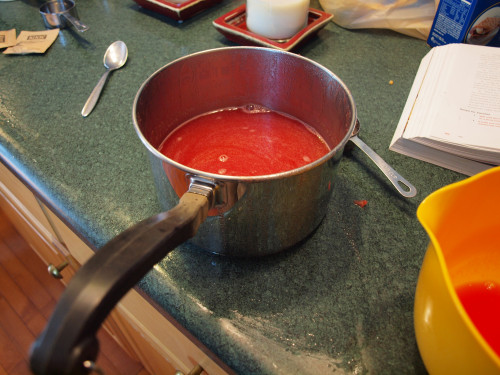
A series of annoying measurements ensued, including the requirement
of two and three quarters cups of juice. Packets of gelatin emptied into
one of the reserved quarter cups, then the steaming hot half cup, then
the rest and into the fridge it went to gelatinize. I whipped the egg
whites, then made some standard whipped cream and soon enough I had
three bowls in front of me.
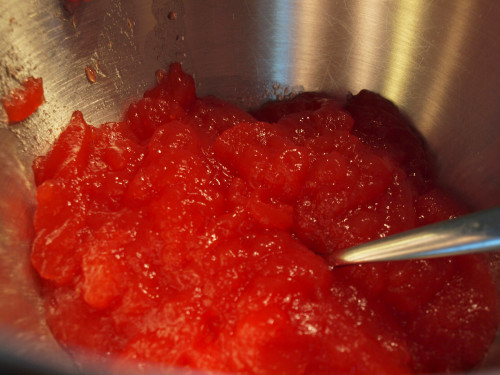
The recipe indicated that I should add a quarter of the whipped cream
first, then the eggs, then the rest of the cream and stir to combine,
but not too harshly, wouldn’t want to disturb its fragile equilibrium. I
followed all of these steps, poured it into the waiting shell, and
prayed that this pie would be edible after it came out of the fridge.
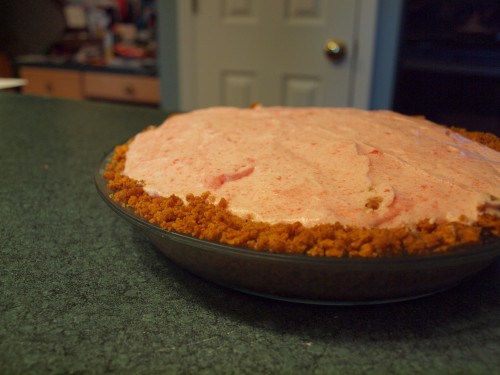
In fact, this chiffon pie garnered positive reactions, much to our
surprise. It was light, not too terribly sweet, and held its shape well.
I think the critical step regarding its consistency was the blending of
the three components. Too little blending and the texture would have
been uneven, whipped cream melting before the watermelon gelatin. Too
much, or too vigorous stirring, and the structure created during
whipping would break down, leading to a floppy, soggy filling.
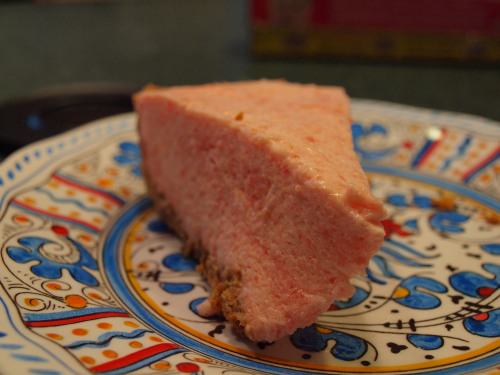
Although not quite as American as apple pie, watermelon chiffon pie
takes an unlikely ingredient and transforms it into a summer dessert
that can cool down even the hottest July evening.

